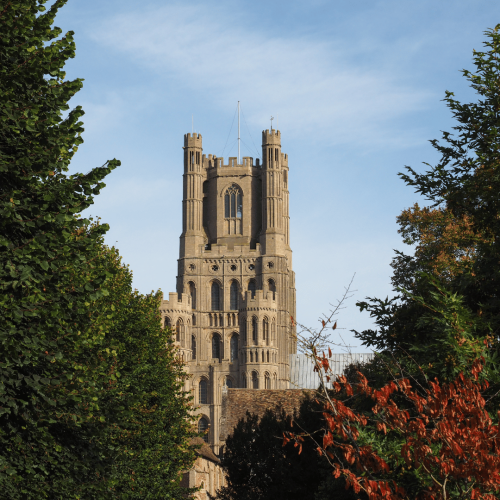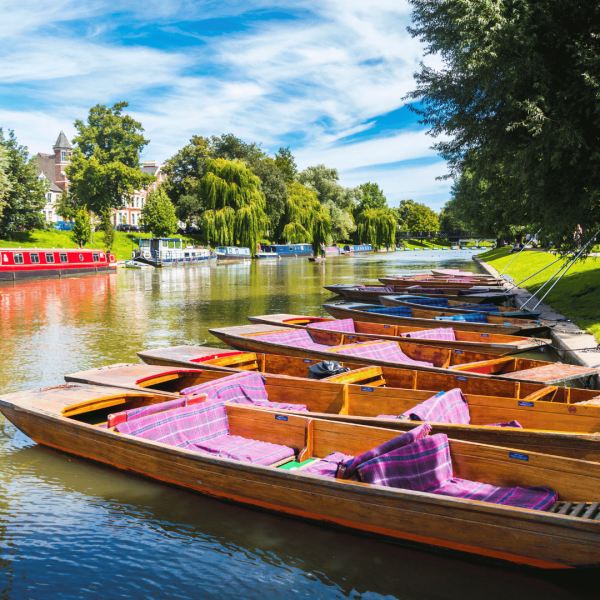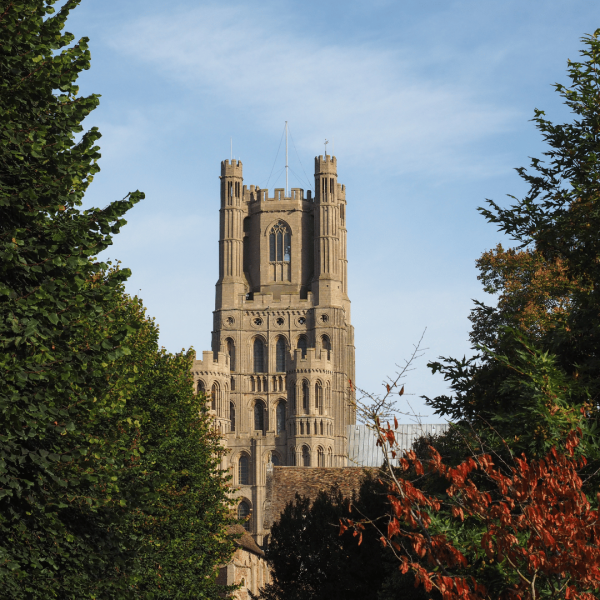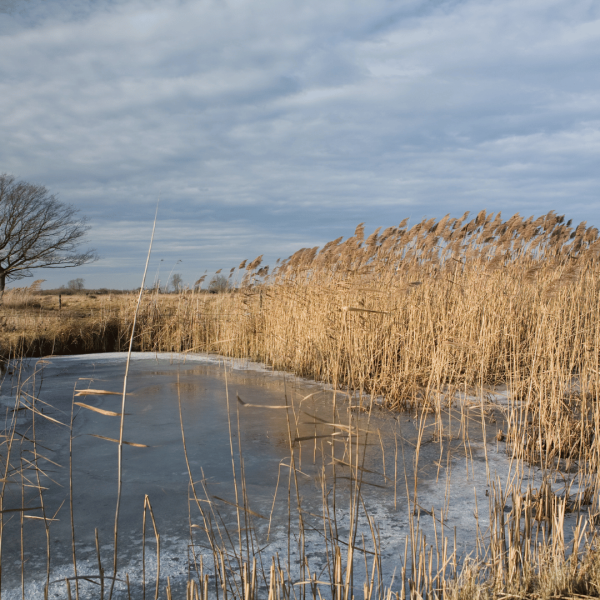Unveiling the Diverse Charms of Cambridgeshire and the Fens

Cambridgeshire, with its historic charm and picturesque surroundings, is the perfect place for your next break. There’s an abundance of beautiful gardens, Nature Reserves, and fenland to provide a tranquil sanctuary for visitors.
Our adults only caravan park is the perfect base for your visit to explore the charms and history of the Cambridgeshire fens, as well as taking in all that the towns and cities have to offer.
What is the history of the Cambridgeshire fens?
The history of the Great Fen covers thousands of years, beginning with the Romans who constructed roads and attempted drainage. In the mediaeval period, monasteries used the fens for solitude and resources.
The late mediaeval and early modern periods saw increased drainage efforts by wealthy landowners, despite local opposition. The Victorian era introduced steam power, transforming agriculture and leading to significant peatland loss.
Severe flooding persisted into the 20th century, with a major habitat restoration project that began in 2001 which aimed to sustainably transform the landscape for wildlife and people.
Five organisations came together, which included the Environment Agency, Huntingdonshire District Council, Middle Level Commissioners, Natural England, and The Wildlife Trust for Bedfordshire, Cambridgeshire and Northamptonshire and began one of the most ambitious habitat restoration projects in Europe.

Why visit Cambridge?
As well as Cambridge being home to one of the world’s most famous universities and punting along the River Cam, tourists visit Cambridge because there’s so much for everyone to see and do.
Cambridge is quintessentially British, and you can find remarkable buildings dating back hundreds of years - the city is a hub of culture.
Being one of the oldest and most famous universities in the world is a major pull for tourists. The city is also well-known for its cycle culture, with rentable bikes and e-scooters on almost every street corner, for visitors and residents to use to get around and explore the area.
Cambridge has earned the nickname “City of Cyclists” due to its high rate of cycling as a preferred mode of transportation. Over 30% of the population commutes to work or school by bike, and tourists are encouraged to join the trend.
Or, if you’d prefer, there’s plenty of public transport options available for you to use when exploring the city. Did you know that Cambridge is home to a guided busway? This unique style of bus transport connects Cambridge with Huntingdon and St Ives, and the busway track is the longest in the world with kerbs and guide wheels on the bus to connect with the kerb to steer the bus.
Taking the bus may be your preferred choice, especially if you’re taking advantage of the three shopping centres Cambridge has to offer. There are over 250 independent businesses in Cambridge to explore, set across the three shopping centres, The Grafton, Lion Yard, and Grand Arcade.
From some of the finest independent boutiques around, a seven day a week market and all the high street brands you know and love, you won’t be disappointed with the shopping options available to you when you visit.
Exploring Cambridgeshire
When staying in Cambridgeshire, you’ll want to explore the wider area. One of the most well-known museums in Cambridgeshire is the Imperial War Museum in Duxford.
IWM Duxford is a perfect destination for a day out for the entire family. From seeing Spitfires take to the skies from the airfield, and getting up close with gigantic aircraft to learning about the men and women who served here you can easily spend a whole day here
Inside every hangar and exhibition you’ll find iconic aircraft, including the Concord and the Blackbird, and historic objects, and you can discover the personal stories of the many lives impacted by conflict.
IWIM recommends allowing at least half a day for your visit, and the Concorde exhibit is open daily from 10:30 am till 3 pm.
Another area we recommend visiting in Cambridgeshire is Ely, with a magnificent cathedral. There’re many attractions and things to see and do in Ely, and as the second smallest city in England you can explore on foot.

Ely Cathedral is widely acknowledged as ‘one of the wonders of the Mediaeval world’, and as well as being a major tourist attraction, the Cathedral is a cultural focal point for East Anglia as a venue for the arts, music, exhibitions, concerts and theatre.
You will also find Oliver Cromwell’s House in Ely, one of the most divisive individuals in British History. Oliver Cromwell’s House is an Award Winning, VisitEngland accredited visitor attraction. Here you can experience what domestic life would have been like in the 17th Century.
If you’d prefer walking around the Fens itself, in Ely you can access Wicken Fen National Nature Reserve, a window on a ‘lost landscape’ and a unique remnant of un-drained fenland which once covered the vast lowlands of East Anglia. Wicken Fen is one of Europe’s most important wetlands, and home to over 9000 recorded species including many rare species of plants, birds and dragonflies.
Huntingdon is another area of Cambridgeshire we recommend visiting, so you can get the full Cambridgeshire & Fens experience. Huntingdon was founded by the Anglo-Saxons and Danes, and the town prospered successfully as a bridging point of the Ouse, as a market town, and in the 18th and 19th centuries as a coaching centre.
If you’ve taken a visit to Oliver Cromwell’s House in Ely, you may also be interested in the Cromwell Museum in Huntingdon. The museum is located in the heart of Huntingdon town centre, across the road from the Town Hall and All Saint’s Church. The Museum tells the story of Cromwell’s life, from his time at the school where the museum is based, and his early years in Huntingdon and St Ives.
Learn more about the Fens
The Fens is an area of 400,000 hectares, which stretches from Lincoln and Boston in the North, Cambridge to the South and Peterborough to the West. You can follow the Fen Edge Trail, which takes you not only on a journey through a beautiful landscape but also on a journey through time.

Fenland heritage comes to life as you discover the full story of dynamic and vast changes to the landscape, and in the last few thousand years, the rich cultural history that was so closely linked.
The Fen Edge Trail is a series of short walks that links the Lincolnshire border in the northwest to the Suffolk border in the southeast, and includes all of the major fen ‘islands’ in the southern fens.
The Great Fen is an expanse of nationally significant fen landscape, between Peterborough and Huntingdon. The area is home to many farms and villages, and two National Nature Reserves, Woodwalton Fen and Holme Fen.
The Fens are particularly fertile land, containing around half of the grade 1 agricultural land in England. The Fens have been previously referred to as the “Holy Land of the English” because of the former monasteries, now churches and cathedrals, of Crowland, Ely, Peterborough, Ramsey, and Thorney.
The Fens are now one of the richest arable areas, and support traditional crops such as wheat and also potatoes, flowers, fruit, and vegetables. A few stretches of peat survive, with two of them being Nature Reserves, valuable for the study of rare plants and insects.
Places to stay
There are plenty of hotels, holiday cottages and independent rentals around the Cambridgeshire area, but for a full adult-only break, with 5 star rated glamping pods, lodges and fishing, we recommend staying with us at Fields End Water.
We’re set in the countryside 2 miles from Doddington village and 6 miles from the market town of March, and our campsite is home to 2 private lakes. Guests staying at our caravan park in Cambridgeshire can fish at both lakes, and we are pet-friendly!
Our fishing lakes are perfect for carp fishing holidays, a peaceful way to experience Cambridgeshire and the Fens. Why not take a look at our camping pitches, and book your stay today.

